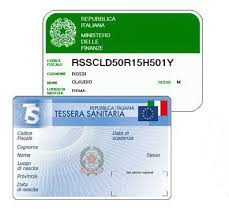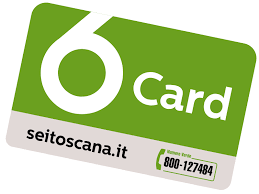When we think of a clean and economic source of energy, the first thing that comes to mind is the sun. The sun provides us with more energy than we could possibly use and yet we do not use it enough.
This article will explain, in simple terms, what solar panels consist of, the different kinds there are, how much they cost and if they do indeed help us save money.
The first distinction we need to make is between solar collectors and photovoltaic panels: the former are used to produce hot water and the latter to produce electricity.
SOLAR COLLECTORS
Solar collectors are panels that, by exposure to the sun, heat the water that flows through them. By taking a look at solar panels that heat water and are suitable for producing domestic water (i.e. water for the shower, tap water, appliances), there are basically two types: flat-plate or evacuated.
Flat-plate solar collectors have a structure built around an absorber (usually a copper pipe with fins). This limits heat loss through air convection and radiation because the glass covering the top of the absorber is designed specifically for this function. These panels are able to produce hot water for domestic use from about March to October.
(SELECTIVE flat-plate solar thermal collectors have specially treated absorbers which make them more receptive to heat, and are thus more efficient in less favourable conditions.
NON SELECTIVE panels, on the other hand, simply have absorbers that are painted black in order to attract greater solar radiation.)
Evacuated solar collectors, generally consist of a number of elements (from 6 to 12 to 18) which are made of a U-shaped copper pipe with absorber fins and two glass tubes; one immediately surrounding the finned copper tube and a larger one surrounding the first glass tube. A vacuum is created between the two glass tubes and the sun's heat is transferred to the copper tubing and the fluid inside of it. These types of collectors have a lower dispersion rate and are more efficient at lower temperatures than their flat-plate counterparts. They are more costly than flat-plate collectors.
Domestic systems based on solar collectors are designed exclusively for the production of domestic hot water. Using them to heat the house would require the installation of a large absorbing surface causing excessive installation costs and most likely an over-production during the summer months which would cause problems to the system itself. It would also extend the payback period / break-even point.
When using solar collectors, we need an accumulation tank to transfer and store the energy that has been produced. To this regard, depending on how heat is transferred, there are natural and forced circulation systems.
In natural circulation systems the flow from the panel to the accumulation tank is determined by a simple law of physics according to which hot fluids rise, while cold ones descend. The tank has an exchange area between the fluid and the domestic water and is in fact installed at a greater height than the panels so as to avoid the use of a pump for circulation.
Cost of installation for a house of approx. 200 sqm would be in the region of E.6000 - E.7000 + IVA.
A forced circulation system, on the other hand, is necessary when the boiler is installed at a lower height than the solar collectors, usually for aesthetic reasons. In order for the system to operate correctly, it requires the use of additional equipment such as a circulator, for example, for the movement of the fluid, and a differential electronic control to read the temperature of the panels, the temperature of the boiler and to regulate the on/off switch of the circulator. This type of system usually costs more than the previous natural circulation type, but it provides you with the possibility of using the same accumulation tank for different heat sources other than the solar collectors (gas-fueled boilers, fuel-oil, wood, pellets, wood stoves, heat pumps, etc. .)
Both types of systems are a worthwhile investment: natural circulation systems, the less expensive solution, are more suitable for buildings with existing systems and entail less building work and require less space for installation. On the other hand, forced circulation systems allow you to integrate multiple heat sources and allow you to ‘supplement’ the heating system during the winter months.
PHOTOVOLTAIC PANELS
Solar electricity panels, also known as photovoltaics (PV), capture the sun’s energy and convert it into electricity that can be used in your home. By installing solar panels, you can generate your own renewable electricity.
How do solar PV panels work?
A solar PV panel consists of many cells made from layers of semi-conducting material, most commonly silicon. When light shines on this material, a flow of electricity is created. The cells don’t need direct sunlight to work and can even work on cloudy days. However, the stronger the sunshine, the more electricity generated, with each panel generating around 200-350W of energy in strong sunlight. Typical systems contain 10 to 15 panels and generate direct current (DC) electricity.
The electricity produced can be used as a continuous current for lights and suitable electrical appliances and can be stored in batteries that are very similar to car batteries, making the energy available in the absence of sunlight. This is what is known as a PV* island system. (*photovoltaic)
The energy can also be converted into alternating current (AC) (which is commonly used in our homes) through devices called inverters. It is then possible to transfer the energy being produced to the public network. This is what is known as a ‘grid connected’ system. For grid-connected systems in Italy, it is possible to receive financial incentives in various forms.
Firstly, let us look at the so-called ‘feed-in tariff’ and secondly the so-called ‘net metering’ policy.
The feed-in tariff applies to a PV system that is connected to a network via a second power meter; the individual who wishes to avail of this financial incentive will first have to install the system at his/her own expense and only afterwards, apply for financial incentives by following the proper procedure and providing documentation. Almost always, the company supplying/installing the system will take care of the entire procedure to apply for the financial incentives. Once the system is set up and running, the energy being produced will be quantified through the second meter. A given amount is paid out to the owner for every kW produced by the system, and varies depending on the type and size of the system.
With the ‘net metering’ policy, the owner of the PV system has the opportunity to consume power as it is produced by his/her system without availing of power supplied by the network, i.e. the main power meter, therefore benefiting from savings on his/her actual power consumption.
With the two types of financial incentives being cumulative, not only will the owner receive money for all of the energy his/her system produces, he/she will not require power supplied by the network.
Once financial incentives have been approved, they are valid for 20 years, while the PV system usually has a 25-year warranty. Be advised that the panels undergo annual deterioration with a subsequent reduction in energy production. They require basic maintenance and it is possible that some parts can become damaged and require replacement.
In any case, by taking into account maintenance costs and unforeseen events, we can safely say that a photovoltaic system is an investment that provides a yield ranging from 8% to 13% per annum for twenty years with a return on investment after 4-6 years.
By taking a practical example for a 3 kW system (20 mtsq surface) installed on a roof in central Italy, availing of the feed-in tariff and net metering:
The example provided above applies to a home which is lived in for 12 months of the year, as it takes into account savings on consumption. The premise is the same for owners of second homes, which are lived in for maybe 6-8 weeks a year: the financial incentive is granted and even if power consumption is limited, and therefore the savings on consumption is limited, the owner will nevertheless receive the amount due for all of the energy produced by his/her system at the end of the year.
This is an investment that yields more than most offered by banks or post offices, despite the elongated return on investment. In the example provided above, the owner will initially pay approximately 9,000 Euro and receive approximately Euro 2,000 for 20 years, with a final net gain of approximately Euro 22,000.
It is also important to remember that feed-in tariff rates are decreasing every quarter and funds for such financial incentives are far from unlimited. For further information, please refer to the GSE site (Energy Services Manager - ESM), the agency that is responsible for managing these incentives: www.gse.it.
Ask your plumber or electrician, who is aware of your consumption habits and needs, and he/she will be able to advise you in terms of the most advantageous solution which is both friendly to the environment ...and your pocket!
This piece was initially written in 2011 (during the economic crisis) and published in Helpworksitalia’s annual booklet. Written by Massimiliano Sellari - an english speaking electrician and plumber who installs solar panel systems based in Mercatale – it couldn’t be more pertinent to today’s unfolding energy crisis. Updated March 2022 by Antonello Caprini – Caprini Impianti – based in Cortona who also installs systems.









